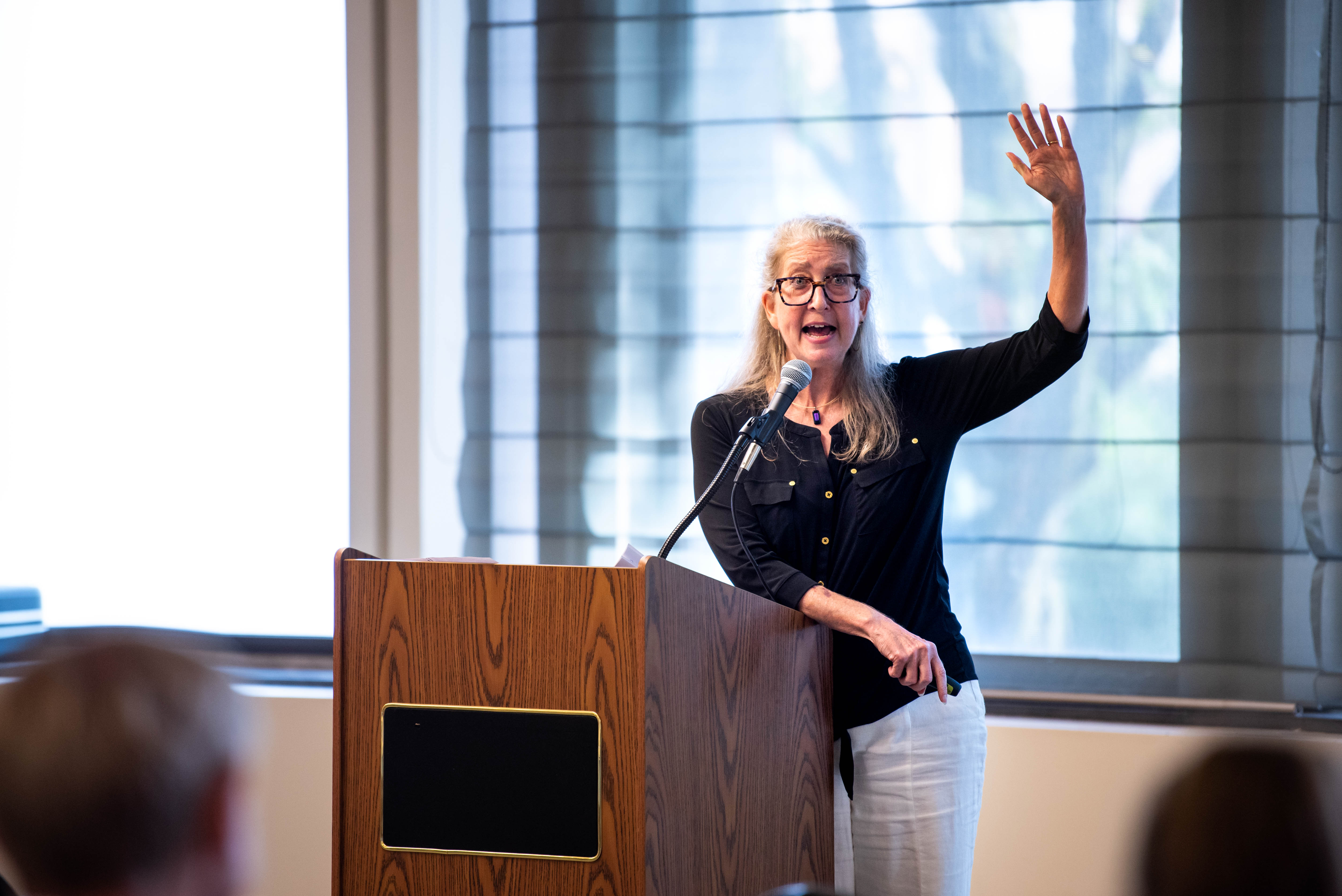Associate Professor of History Kyle Ciani has a simple message for future activists.
“We’re in it for the long haul. Nothing’s going to happen overnight,” Ciani said. “This is about being committed to an issue and following through on that issue.”
Ciani offered this message to an audience of approximately two dozen during the Constitution Day Celebration held September 19 in the Escalante Room in Hewett/Manchester Halls. Ciani’s presentation, “From the Lobby to the Street: Strategies Used by Voting Activists in the Early 20th Century,” was the focus of the event organized by the Center for Community Engagement and Service Learning and the Illinois State University American Democracy Project to commemorate the 100th anniversary of the passing of the 19th Amendment.
Ciani spoke about the women’s suffrage movement and activists of the National Woman’s Party’s efforts to press Congress to pass the amendment, which prohibits the government from denying the right to vote based on sex. Congress passed the amendment in 1919 and met the 36-state threshold for ratification a year later.
Ciani started her talk by connecting the fight for suffrage to the lives of her maternal great-grandmothers. Both women came from lower-class backgrounds and neither engaged in political activism. Still, they were proud of their right to vote and did so at every opportunity.
“My great-grandmothers had two things in common: They loved their granddaughter and they loved voting,” Ciani said.
Ciani touched on the wide variety of strategies suffragists engaged in. While actions such as protests and marches were effective, the creativity, intelligence, and passion of suffragists helped turned enemies into allies. Spreading the message through mass media was important, leading to the creation of own newspapers telling women what voting could do for them. Suffragists also kept detailed records about the political positions of members of Congress and used this information to effectively lobby them.
“They were able to convey their intellect and their engagement in the political process,” Ciani said. “And as a result, those congressmen wanted them to engage with the political process.”
Building popular and political support came with sacrifice. A turning point in the suffrage movement occurred on November 14, 1917, commonly known as the “Night of Terror.” Suffragists jailed for picketing outside of the White House were beaten and brutalized by guards on the orders of the prison’s superintendent. Newspapers reported on the treatment of the protesters, creating more support for the movement.
Ciani also noted some of the movement’s missed opportunities. The suffragists didn’t fully realize their goal of building a broad coalition reaching across lines of race and class. She acknowledged that creating this kind of coalition is still a challenge for modern activists.
“I wouldn’t say they failed, but we’re still working on that,” she said.
Freshman Noelle Wiseman said Ciani’s presentation underlined the importance of activism and community engagement.
“It definitely motivated me to stay active with voting and activism,” said Wiseman, an organizational leadership major.
Faculty such as Ciani are an excellent resource for students who want to make an impact, said Interim Director of the Center for Community Engagement and Service Learning Harriett Steinbach, M.S. ’05
“We should feel so blessed to have such a great scholar and activist on campus who is so clearly a committed and caring faculty member to her students,” Steinbach said. “It is great to have such a dynamic person present information and remind us that we need to be fighting to ensure everyone has the access to vote.”
For more events about voting rights and to learn how to cast your vote on campus, visit the Illinois State University American Democracy Project website.

